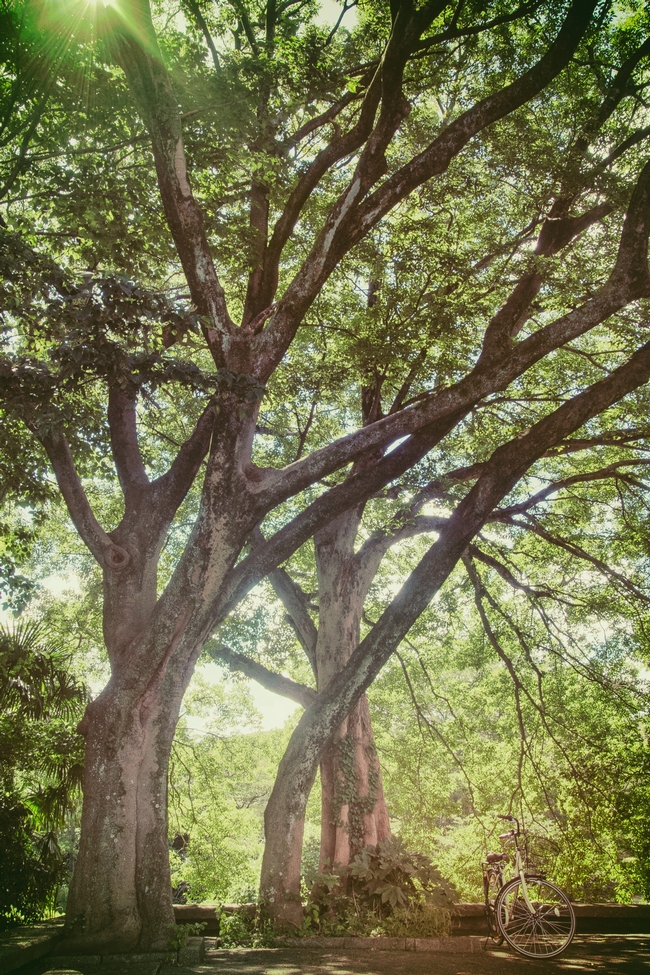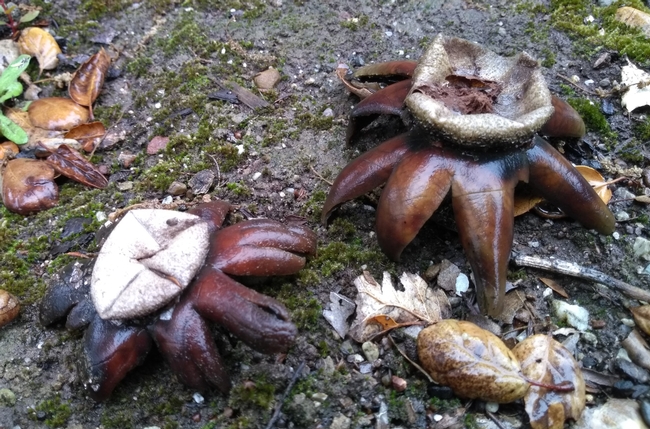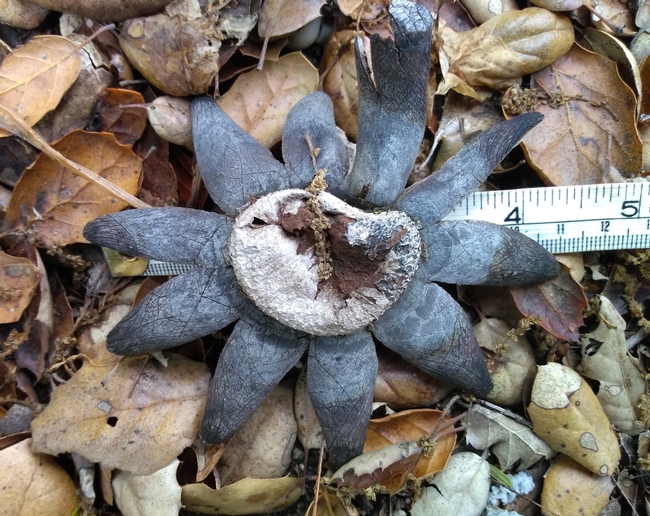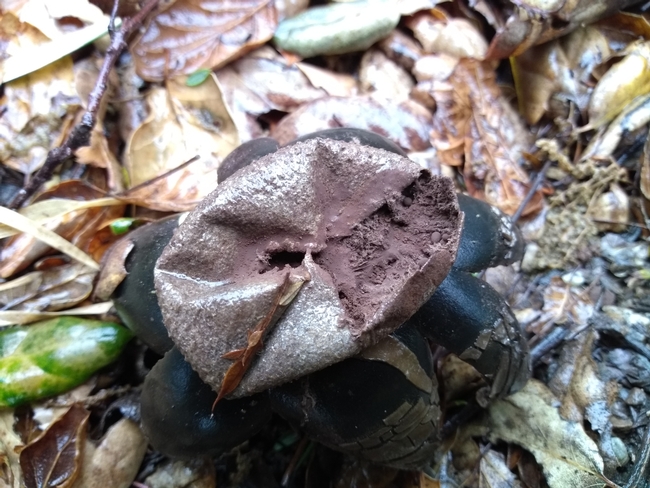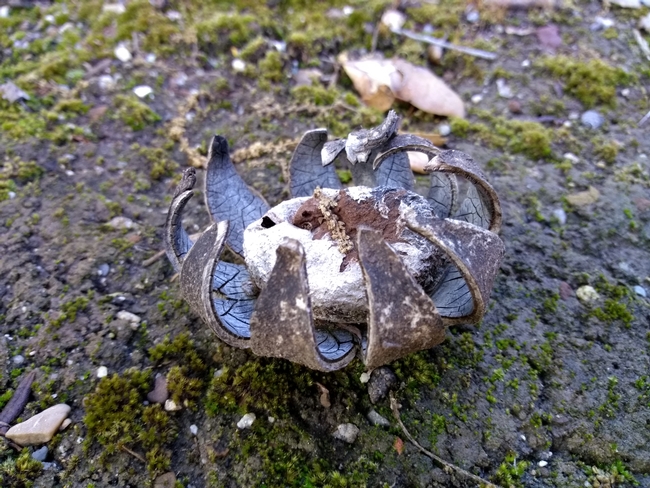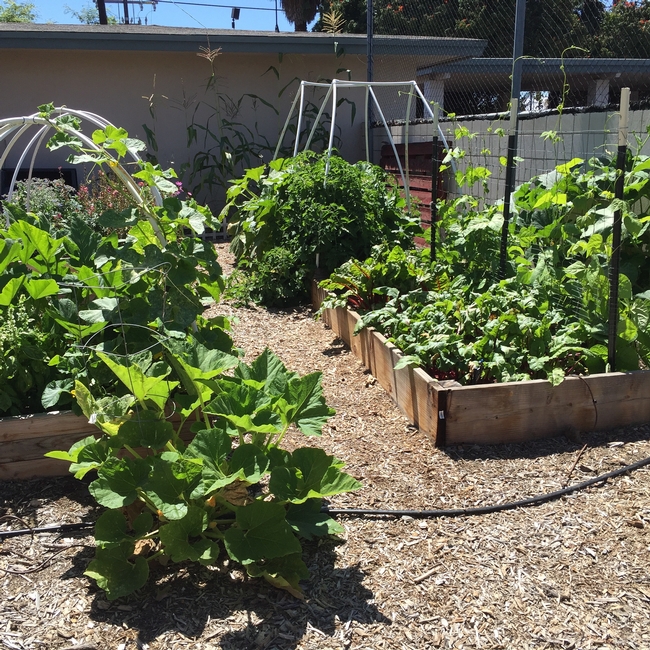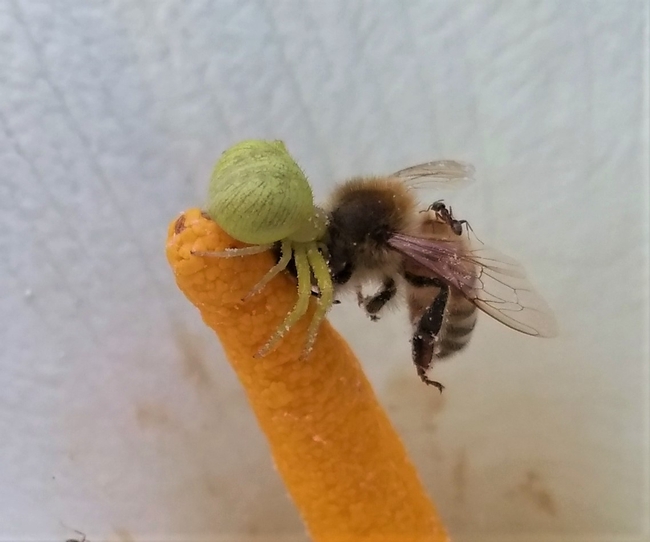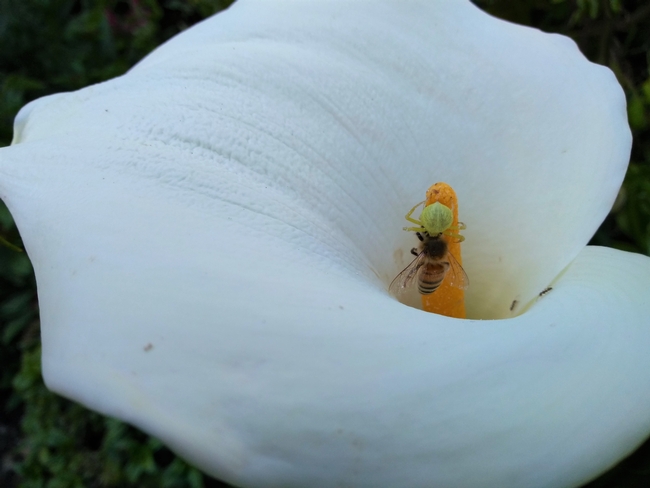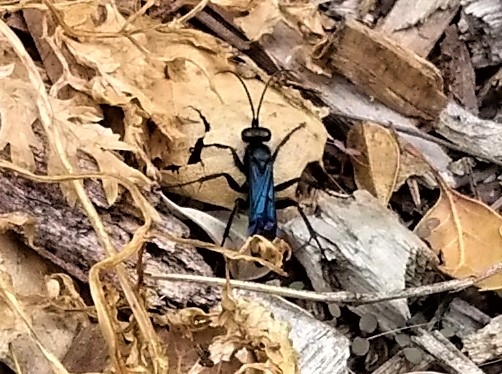
Posts Tagged: STEM
TREEmendous Learning Webinars for Middle and High School Students
This is a cross-post from the "Topics in Subtropics" blog.
Join us on alternate Tuesdays in May and June, 3:00 pm to 4:00 pm, for this opportunity designed for middle and high school students. Treemendous Tuesdays is a collaboration of U.S. Forest Service, Los Angeles Center for Urban Natural Resources, California Project Learning Tree, California 4-H, and University of California Agriculture and Natural Resources.
Five webinars will be hosted every other week starting May 5 and ending June 30. These events are free and registration is required. Flyer is attached. Dates, topics, and link to registration are below.
Please share this online opportunity with organizations, community members, teachers, parents, and students. We look forward to giving students a glimpse of the wonders and benefits that trees offer!
- May 5: Invasive Species (invasive shot hole borers)
- May 19: Invasive Plants & Trees
- June 2: Benefits of the Urban Forest
- June 16: iTree
- June 30: Living with Fire
Register https://ucanr.edu/survey/survey.cfm?surveynumber=29846
'Tis the Time for Mushrooms
In this weekly blog, Dr. Annemiek Schilder, Director, UCCE Ventura County and Hansen Agricultural Research and Extension Center, shares her observations about the natural world across the seasons. As she says:
"Gently observing your surroundings with curiosity will teach you some amazing things. There are so many fascinating things happening under our noses, only wanting for an observant eye."
Tis the time for mushrooms.
No, I am not talking about the Portobellos in your pasta dish. I am talking about the fungal denizens of our environment. Mushrooms are the fruiting bodies of fungi that grow on leaf litter, wood pieces or plant roots. Mushrooms contain spores, which are in essence the seeds of the fungus. Most spores fall to the ground or are carried by the wind to other locations where they start new colonies. If you took an air sample and looked under the microscope, you'd find dust and pollen, as well as fungal spores.
Fungi - which are also called molds - need moisture. That is why they love to grow in your shower stall and on fabrics in damp locations. The body of a fungus is made up of threads that grow over and into surfaces, such as a piece of bread or those strawberries you forgot in the refrigerator. Sometimes when I retrieve a fuzzy gray item from the back of my fridge I can only guess what it used to be by its shape. And even then I may not be entirely sure. I have had multiple such “experiments”.
Fungi are the janitors of nature – they eat up old leaves, vegetables and fruits. Some fungi also attack living plants, causing the plants to become diseased.
Two false earthstars after the rain. Photo Credit: Annemiek Schilder.
After a recent rainy spell, I was surprised and elated to see various types of mushrooms, including Astraeus hygrometricus, the false earth star or barometer earth star. Astraeus is Greek for “Starry one” and hygrometricus means “water measuring”. The name indicates that they can sense the amount of moisture in the air.
Size of this false earth star is 4 inches. Photo Credit: Annemiek Schilder.
Earthstars are really puffballs full of spores with a thick skin that breaks open like a star. The arms of the star bend downward under moist conditions to push the puffball upwards so that the wind can catch the spores as they are released. Raindrops falling on the puffball force the spores out in puffs. With the naked eye, the spores look like cocoa powder but under the microscope they appear like tiny burnt coconut macaroons. Each spore can grow a new fungal colony with sufficient moisture, appropriate temperature and a food source.
Brown powdery spores visible in the broken puffball. Photo Credit: Annemiek Schilder.
False earthstars are mycorrhizal, which means that they are associated with the roots of plants, in this case oaks. The fungal threads act like an extension of the oak root system, bringing essential nutrients like phosphorus and nitrogen to the plant, while the plant donates food, i.e. carbohydrates, to the fungus. It's a natural tit for tat that benefits both the tree and the fungus. Many plants have mycorrhizal fungi in their roots, which may also protect them from attack by certain pathogens and insects.
The very next day when the weather cleared, I was able to observe the earthstar responding to a drop in relative humidity: the star's arms started to curl back up around the puffball, so cute!
False earth star arms starting to curl up in dry weather. Photo Credit: Annemiek Schilder.
Related Reading: Eat or Be Eaten
Celebrate Earth Day with Gardening and Other Stay-at-Home Resources
This week marks the 50th anniversary of Earth Day. This year, consider celebrating the day with gardening and other stay-at-home resources curated by your local UCCE office.
History of Earth Day
Earth Day was launched in 1970. Many factors contributed to the call for a national day focusing on environmental stewardship, including the publication of Rachel Carson's Silent Spring - serialized in the New Yorker - and the catastrophic oil spill that occurred off the coast of Santa Barbara in 1969. The Santa Barbara oil spill galvanized U.S. Senator Gaylord Nelson (D-Wisconsin) to call for a national day of locally inspired and organized "teach-ins" on the environment - a national "Earth Day." The Earth Day model was inspired by the spirit of campus activism at the nation's colleges and universities. It wasn't top-down, but rather a grassroots effort that encouraged communities to develop educational and service events around issues and topics important to them.
Earth Day struck a chord; some estimates suggest that 1 in 10 Americans participated in the first events. Earth Day is widely credited with "sparking" the modern environmental movement. Landmark environmental legislation swiftly followed (including the Clean Air Act, Clean Water Act and Endangered Species Act). The Environmental Protection agency was founded that same year. Twenty years after its launch, Earth Day became a global movement.
You can learn more from the Earth Day Network by linking to this website.
Home Garden Resources
There is a wave of renewed interest in gardening as a result of the COVID-19 pandemic. Learn more about "crisis" gardening - and a new "Victory Garden" movement - in this article from the New York Times.
Closer to home, we have a wealth of gardening resources for you.
One of our favorites is the California Garden Web, designed by our UC Master Gardeners. You'll find a wealth of gardening information and a helpful glossary.
Ventura County is blessed with a wonderful growing climate and many of us have backyard fruit trees. Learn more about cultivating and caring for your home orchard here.
Resources for the Home Classroom
Many of us are working with our children in home classrooms. The UC 4-H Youth Development Program has a range of resources available to engage young learners. In honor of Earth Day, take a look at our 4-H Vegetable Gardening Project sheet. We also recommend our 4-H Water Conservation Project sheet, which provides engaging, science-based activities the entire family can enjoy. 4-H is one of the oldest youth development programs in the nation and we'll be sharing other educational resources in upcoming posts. #Head #Heart #Hands #Health.

Be Kind to the Earth by Reducing Food Waste
Nearly 40 percent of the food produced in the U.S. is wasted and much of that waste ends up in landfills (definitely not good for our environment or the economy).
The National Resources Defense Council estimates that the average family of four throws out nearly 1,000 pounds of food each year, wasting roughly $1,500.
Consumers as a group waste more food than farms, grocery stores or restaurants. For tips on ways you can reduce #FoodWaste, click here.
History lesson: The image on the left is a poster that was used during World War I and World War II to promote food conservation. First printed in 1919, it contains tips that are helpful today.
This image is from a collection held by the Museum of County. Photographer: Aysen Tan.
Related reading: What a World War I Poster Can Teach Us About #FoodWaste.
Thank you, Volunteers!
This week is National Volunteer Week and we want to thank the hundreds of volunteers who are part of UCCE Ventura...and who make our work possible. Thanks to our 4-H, Master Gardener and HAREC volunteers. You are central to our mission and we value you. Youth, Families and Communities Education Program Manager Susana Bruzzone-Miller created this video to express our appreciation.
COVID-19 Resources
Our COVID-19 landing page provides links to important resources about the pandemic, including information for the agricultural community. In response to the coronavirus (COVID-19) illness, our office is closed for face-to-face service through May 15th. While we regret the inconvenience, these are the precautions we are taking to support one other and comply with University, local, county and state government recommendations. Our staff is telecommuting and can be contacted via phone and email. We are here to serve you.
Stay safe.
Thank you UC HAREC Volunteers
Eat or Be Eaten
In this weekly blog, Dr. Annemiek Schilder, Director, UCCE Ventura County and Hansen Agricultural Research and Extension Center, shares her observations about the natural world across the seasons. As she says:
"Gently observing your surroundings with curiosity will teach you some amazing things. There are so many fascinating things happening under our noses, only wanting for an observant eye."
As I was poking around my garden and looking at flowers, my eye suddenly fell on an odd-looking green spider carrying a honey bee on the spadix of a calla lily. My first thought was “poor bee”, working so hard to pollinate flowers and then getting caught by a spider – life is not fair!
A spider and a bee: eat or be eaten. Photo: Annemiek Schilder
Of course I was fascinated by the little scene and was wondering what was going on, what kind of spider was that? It was green with a large patterned abdomen and looked like one of those spiders that hang out in flowers. The spider hung on to the bee for a while, walking this way and that, it almost seemed too big for it to handle. The next day, I saw the dead bee lying at the bottom of the flower and no sign of the spider. I wondered if it had given up on the bee. As I looked into it, I discovered a much more sinister thing had taken place…
The spider turned out to be a flower crab spider (genus Misumena). These spiders are harmless to humans and often take on the color of the flower background to camouflage themselves. They have long “arms” like crabs to capture their prey and can walk forwards, backwards and sideways.
According to the Missouri Department of Conservation: “Crab spiders don't use webs to capture their prey; instead, they hide in flowers and wait for insects to come to them. Crab spiders often look like part of the flowers they inhabit. Unlike spiders that spin webs, crab spiders have good vision. When a bee, fly, or other prey lands on the flower seeking nectar, the crab spider attacks, injects venom into the prey, then holds it while drinking its juices.”
Flower crab spider feeding on honey bee blood, like a vampire! Do you notice another insect in the picture? This is an ant looking for nectar. Photo: Annemiek Schilder
So there we have the answer! The crab spider obviously sucked out the hemolymph (insect blood) and then discarded the bee corpse after dinner.
The next day it looked like the tables were turned: to my surprise, I saw a motionless brown spider being dragged by a blue-black insect into a hole in the ground. Before long, the same insect was walking nervously, zigzagging and fluttering its wings, over the ground. It was difficult to photograph since as soon as I approached, it would fly away.
However, I got a closer look at it by zooming in on the photograph: it turned out to be a spider wasp in the family Pompilidae, which often have a bluish-black body with a metallic sheen. They have long spiny legs and curved antennae. Spider wasps are solitary and the adults feed on flower nectar. The female wasps hunt spiders which they sting and paralyze, then drag to their burrows in the ground. Next, the female wasp lays a single egg in the spider and as the larva grows, it eats the insides of the still-living spider. How's that for a horror story to keep you up at night?
Spider wasp looking for a spider to attack among wood chips and leaves. Photo: Annemiek Schilder
I then remembered seeing a giant wasp over 2 inches long in Costa Rica. That wasp was a Tarantula hawk, which hunts and lays eggs in tarantulas. They are not aggressive towards humans but can give one of the most painful insect stings in the world when handled!
Did you know that Dr. Justin Schmidt, an entomologist (someone who studies insects) from Arizona, devised a scale known as the Schmidt Sting Pain Index? To develop this scale, he allowed himself to be stung by a variety of wasps, bees and ants. He rated the Tarantula hawk's sting as a “4” on a 0-4 scale and described it as "blinding, fierce, and shockingly electric. A running hair dryer has been dropped into your bubble bath. A bolt out of the heavens. Lie down and scream."
So look, but don't touch, is the best strategy!
My Trees Look Horrible. Why?
The calls are coming in and have been for the last several months. The trees are tired, worn out and look horrible. What's the problem? Well four years of drought, accumulated salts in the root zone and irrigation practices that aren't removing the salts from the root zone. It sets up a situation of tip burn, but much more extensive than tip burn is the water stress that results from salt accumulation. Salts compete with roots for water and they act to pull water away from the roots. It is as if less water is being applied. The water stress sets up the trees for a fungal infection called variously leaf blight, stem blight and in young trees, death. We used to call this Dothiorella blight, but since the work of Akif Eskalen at UC Riverside, it turns out it is one of many fungi that cause this problem, most of them Botryosphaerias.
The leaves show what would appear to be salt burn damage which increasingly causes leaf drop. In fact, there's often a pile of leaves under the canopy unless the wind has blown them away. The difference between this and salt burn is that there is not a regular pattern to it. It can start on the margins, or in the middle of the leaf, or wherever it darn well pleases. Whereas salt/tip burn always starts at the leaf tip and progressively moves back onto the main part of the leaf. Leaf blight (I don't like to use bigger words than that – Botryosphaeria. Try spelling it on the phone), on the other hand doesn't follow this regular pattern. It's a random pattern.
This a decomposing fungus. Wherever there is organic matter – leaves, twigs, branches, fruit, whatever is dead on the ground – there is a decomposing fungus. When the fungus finds a stressed plant, it invades the most susceptible part of the plant, usually the leaf. It starts growing through the tissue and down the leaf petiole. It then starts growing down the dead part of the plant. Most of a tree is dead. All that stuff under the bark and cambium is dead tissue, although it still carries water. In mature trees, there is a capacity to close off the decay and limit it. In young trees (younger than two or so), the capacity is lacking and the fungus can keep on growing down to the union and kill the tree.
As can be imagined, this fungus does not discriminate amongst the type of plants it feeds on. It will go to water-stressed, citrus, roses, apples, etc. It goes to every woody perennial that I am aware of. I've seen it on redwoods and eucalyptus. It especially goes after shallow-rooted species like avocado which are the most prone to water-stress. Like when a Santa Ana blows in and the irrigation schedule is slow to respond. Like when there is a heavy load of fruit. Fruit have stomata and the more environmental stress the more water they lose and pull on water from the tree.
Now imagine a tree loaded with fruit, in the later summer, with a Santa Ana and salt stress. Boom! Fruit drops and leaf blight shows up. And the damage doesn't go away, until it so severe that the leaf drops and new leaves come on in the spring.
Hopefully these rains will wash the salts from the root systems and refill the profile with high quality water. We are extremely reliant on winter rain to cover up the effects of the damage that irrigation water does to our soil and plants. And rain is the answer, as long as it's not too much.
Notice the even pattern of necrosis with tip burn
And the random pattern with leaf blight.

avocado tip burn 2

avocado leaf blight 3

